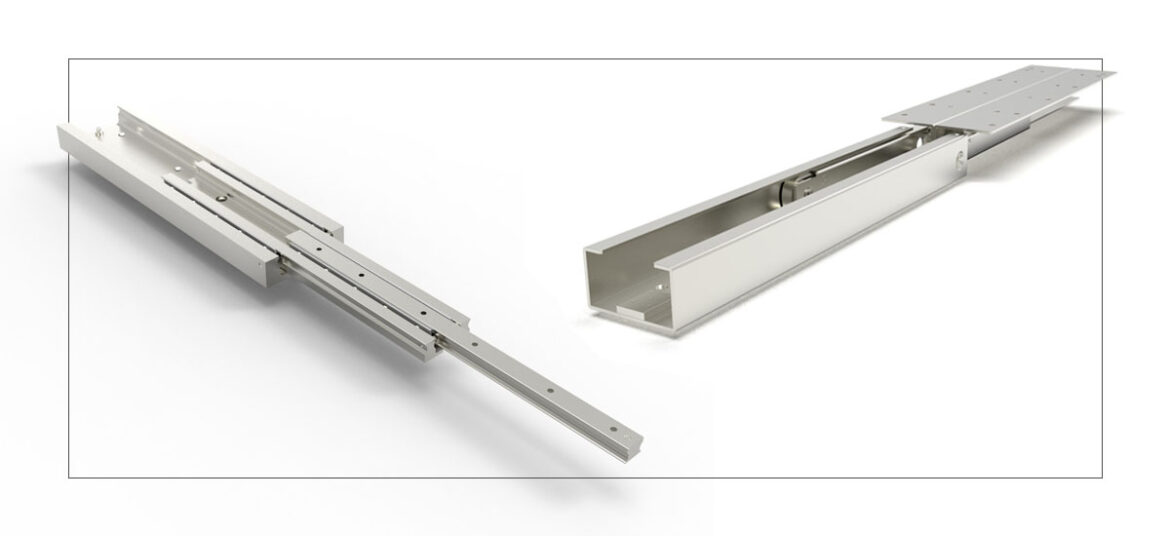When it comes to manufacturing drawer slides, the choice of material plays a crucial role in determining the product’s performance, durability, and cost-effectiveness. Two of the most commonly used metals in slide production are cold-rolled steel and stainless steel. Each material has its unique properties, advantages, and potential drawbacks, making the decision a key factor in delivering quality drawer slides.
Partnering with an experienced Drawer Slides Manufacturer can help navigate the complexities of material selection, ensuring the final product meets specific requirements, whether for residential furniture, commercial cabinetry, or industrial applications. This article explores the characteristics of cold-rolled steel and stainless steel, comparing their benefits and challenges in slide production.
Understanding Cold-Rolled Steel
Cold-rolled steel is produced by rolling steel sheets at room temperature, which increases its strength and surface finish quality compared to hot-rolled steel. This process compresses the metal, resulting in a smoother, more precise thickness, making it ideal for applications requiring close tolerances and consistent dimensions.
In slide production, cold-rolled steel is valued for its structural integrity and cost efficiency. It offers good tensile strength and hardness, allowing manufacturers to produce robust slides capable of supporting heavy drawer loads. The smooth surface finish also facilitates easier fabrication processes such as stamping, bending, and welding.
However, cold-rolled steel is prone to corrosion if left untreated. To enhance its resistance, manufacturers typically apply surface treatments like electroplating, zinc coating, or powder coating. These coatings extend the lifespan of drawer slides by protecting against moisture, rust, and everyday wear.
Features and Benefits of Stainless Steel
Stainless steel, on the other hand, contains a minimum of 10.5% chromium, which forms a passive oxide layer on the surface, making it inherently resistant to rust and corrosion. This property makes stainless steel a preferred choice for environments where exposure to moisture, chemicals, or harsh conditions is frequent.
In slide manufacturing, stainless steel offers exceptional durability and requires minimal maintenance. Its corrosion resistance ensures slides maintain their appearance and functionality over many years, even in kitchens, bathrooms, or outdoor applications. Stainless steel is also known for its aesthetic appeal, often used in high-end furniture and cabinetry for a sleek, modern look.
The downside of stainless steel is its higher cost compared to cold-rolled steel, both in terms of raw material prices and fabrication complexity. Stainless steel is harder to machine and weld, which can increase production time and expenses.
Material Performance in Slide Production
Both cold-rolled and stainless steel perform well in drawer slide production, but their suitability depends on the intended use and environmental conditions.
Cold-rolled steel slides are an excellent choice for indoor furniture where exposure to moisture is limited. Their high strength and ability to be coated allow manufacturers to produce durable slides at a lower cost, making them popular in mass-market products. However, without proper surface protection, cold-rolled steel slides may deteriorate faster in humid or corrosive environments.
Stainless steel slides excel in areas where corrosion resistance is critical, such as medical facilities, laboratories, and outdoor installations. They also support heavier loads and maintain structural integrity in extreme temperatures. For premium or specialty furniture, stainless steel adds value by combining longevity with an attractive finish.
Environmental and Economic Considerations
From an environmental perspective, both metals have pros and cons. Cold-rolled steel production is energy-intensive, but the material is highly recyclable, and coatings can be formulated to minimize environmental impact. Stainless steel also requires significant energy to produce but is similarly recyclable and benefits from its long service life, which reduces the need for frequent replacements.
Economically, cold-rolled steel offers manufacturers and consumers a cost-effective solution without compromising essential performance. Stainless steel, while more expensive upfront, can prove cost-efficient over time due to lower maintenance and replacement costs.
Choosing the Right Material
Selecting between cold-rolled and stainless steel involves balancing cost, performance, durability, and appearance. A reputable Drawer Slides Manufacturer will assess your specific application requirements and recommend the most suitable material.
For general household furniture, cold-rolled steel with appropriate coatings often provides the best value. For environments demanding higher corrosion resistance or aesthetic appeal, stainless steel is the preferred choice despite its higher cost.
Conclusion
The decision to use cold-rolled or stainless steel in drawer slide production significantly impacts the quality, longevity, and user experience of the final product. Understanding the strengths and limitations of each material helps manufacturers create slides that meet diverse needs and expectations.
By collaborating with an experienced Drawer Slides Manufacturer, businesses can ensure they choose the right steel type and manufacturing process to deliver reliable, durable, and cost-effective drawer slides. Whether prioritizing budget or environmental resilience, informed material selection is key to successful slide production.


